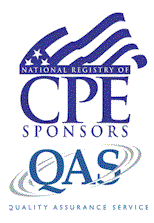Celebrating 25 years serving our friends and customers!
Current Developments in Accounting and Financial ReportingCode: 25-CDEV
Add to Cart
Course Details
361 pages
Objective: The purpose of this course is to inform the reader of the various changes to accounting and financial reporting affecting the accounting professional. Topics include a review of FASB projects including those related to financial performance, leases, and financial instruments, practice issues involving the statement of cash flows, fair value reporting, pensions, the international convergence project, little GAAP, and more. The structure of the course is to encourage the reader to recall existing GAAP rules coupled with identifying, stating and outlining rules related to new and proposed pronouncements.
The course also includes a discussion of COVID-19’s impact on accounting and financial reporting
After reading the Section I course material, you will be able to:
- Identify some of the 12 recommended principles for the Comprehensive Business ReportingModel
- Recall the definition of free cash flow
- Recognize some of the key ratios used to analyze working capital
- Identify some of the symptoms of inefficiently managed working capital
- Identify some of the key differences in the clawback provisions found in Sarbanes-Oxley andDodd-Frank
- Recognize one of the characteristics of a multi-employer pension plan
- Identify some of the key benefits and disadvantages of the principles-based system
- Recall one of the reasons why U.S. convergence with international standards has not occurred
- Identify a key change made to lease accounting by ASU 2016-02
- Recognize the general structure of the FASB Accounting Standards Codification (ASC)
- Recognize some of the differences between IFRS for SMEs and IFRS
- Recognize how to account for deferred income taxes under the Tax Cuts and Jobs Act
- Identify how to account for deferred tax assets and liabilities when converting from S to Ccorporation
- Recognize how to present deferred income taxes on the balance sheet under ASU 2015-17
- Identify some unusual transactions and how they are recorded on the statement of cash flows
- Recognize the types of arrangements that qualify a not-for-profit entity for ASU 2019-06, saccounting alternative elections related to goodwill amortization and acquisitions
- Recognize the accounting alternative for certain related-party leases in ASU 2018-17
- Identify the impairment test for goodwill under ASU 2017-04
Presentation Method: Self-Study
Category: Accounting
CPE credit: 16 Hours
Program Level: Update
Prerequisites: None
Advance Preparation: None
Exam expiration date: Participants must submit exams for grading within one year from the date of purchase



